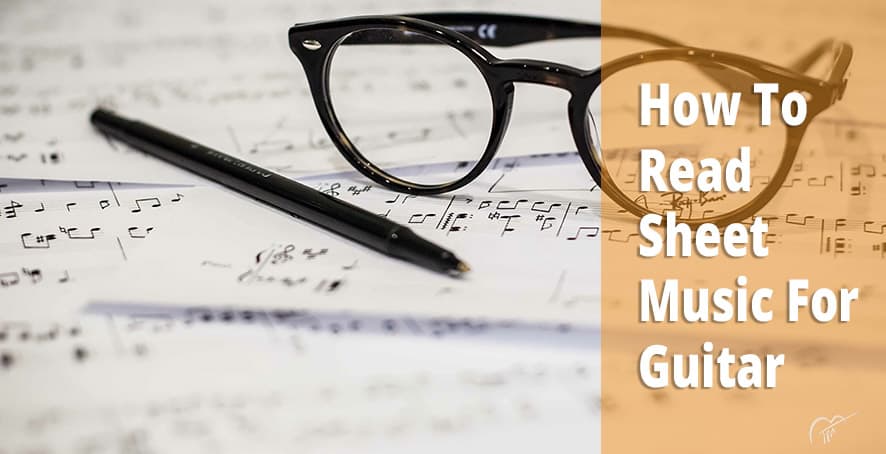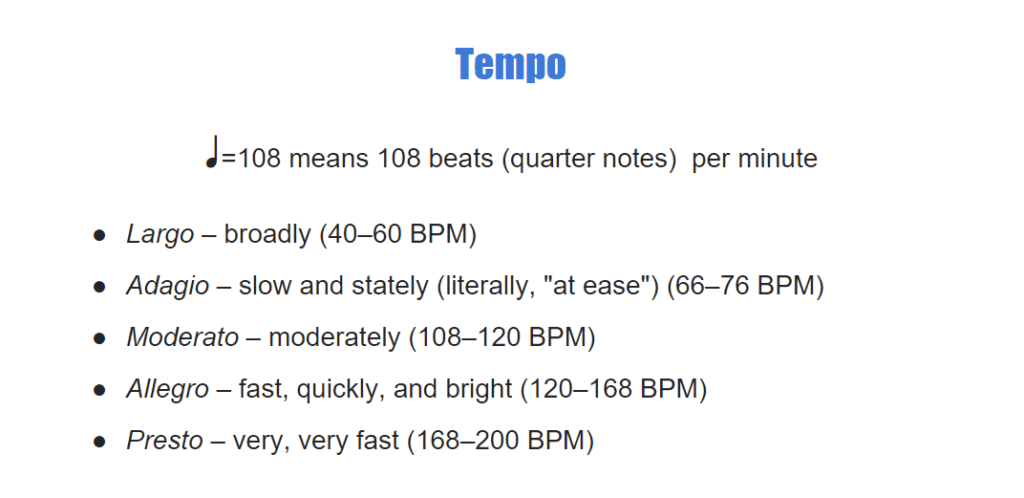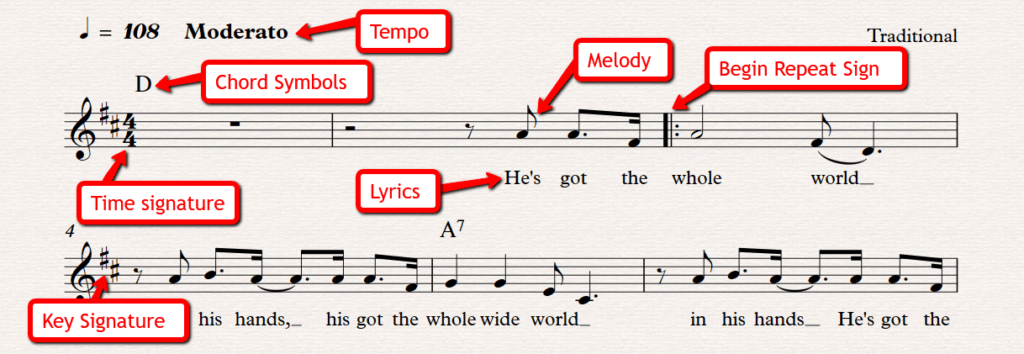Updated July 26, 2024
Learning to read sheet music can significantly enhance your guitar playing.
A lead sheet is one of the simplest and most useful forms of sheet music for guitarists, providing chords, melody, and lyrics to guide your playing. The chords, written above the music staff, indicate what to play, while the melody and lyrics help you with chord changes and song structure.
Other forms of sheet music like PVG (piano, vocal, guitar) and classical guitar sheets offer additional tools for more complex arrangements.
This guide will help you understand how to use these resources effectively to improve your guitar skills.

What Is A Lead Sheet?
The lead sheet is one of the simplest forms of sheet music. It is especially useful for anyone who wants to follow the melody of the song, or for the guitarist that is just looking for the chords.
The 1st part of the lead sheet is the guitar chords. These are usually written on top of the music staff as letters and indicate which chords to play.
The next aspect under the chords is the melody of the song. This is usually written out in standard music notation. For the most part this is helpful for the singer, but it is helpful for the guitarist as a clue of where to change chords.
Occasionally you'll see versions that also have guitar tab to help the guitarist play the melody.
Finally underneath the bars you'll find the lyrics of the song. Of course this is especially useful for singing the song, but it can also give the guitarist another clue as to where to change chords.
How About PVG?
PVG stands for piano, vocal and guitar.
Music that is designated as PVG usually has all the aspects of the lead sheet with the addition of a piano accompaniment written out.
Other Forms Of Sheet Music
There are many other forms of sheet music that are written out note for note for specific instruments such as piano, violin or flute.
Most of these types of sheet music will not be useful for playing guitar. One type that may be useful is classical guitar sheet music.
Classical guitar sheet music is written out note for note for the guitarist. It's often used by those playing classical guitar or other styles of fingerstyle guitar. If it's written out in standard music notation it requires a fair amount of experience reading notes to make use of this form of sheet music.
Nowadays you can find many classical style guitar sheets that also have tablature written underneath the standard music notation.
Getting Information From Sheet Music
Sheet music can usually tell you what key the song is in and the time signature. The time signature tells you how many beats are in the measure. That can help you to decide which strums to use.
Also the tempo will tell you roughly how fast or slow the song should be played.

Using Sheet Music For Guitar
To take full advantage of sheet music would require learning how to read music. However you can use many aspects of both lead sheets and PVG music to help play songs on guitar without actually “reading” the notes.
The most common way a guitarist uses sheet music is as a chord chart. This means that you are following the chords and supplying the appropriate guitar strumming pattern.
This does generally require that you know the song well enough to be able to figure out an appropriate strumming pattern and to know if what you're playing sounds right. When I use sheet music this way I'm just using the chord symbols as a guide and using my ears to hear where the chords fits with the melody.
If you want to play the melody of the song on guitar you will either need to learn to read standard music notation (recommended) or find music that has the guitar tablature written out underneath the standard notation.

Steps For Reading A Chord Chart
Here are the steps for using sheet music as a chord chart by following the chords and using the lyrics and melody just to help with knowing where to change chords.
- Listen to the song if possible.
- Look over the entire sheet to see how the audio version relates to the sheet.
- Look at the structure of the song. Where does it repeat? Which parts of the song are similar? Look for common chord patterns and sections of the song that have the same chord changes. When you recognize the patterns it will be much easier to play the song.
- Now strum the chords through the entire song using a very simple (perhaps straight down) strum. Follow all repeats and watch how the chords relate to the lyrics and melody.
- Determine the time signature and tempo. Decide what strumming pattern would be best. Don't worry too much if it's the perfect strum. You'll have a better idea if it works as you play the song and get the feel.
- Now play through the song at the proper tempo with the strum you've chosen. I like to play along with an audio track if I can to see how it fits.
- Make adjustments to the strum and tighten up the chord changes until you're able to play through the song to your satisfaction.
Recommended Resources:
Tell Us What You Think - Please Comment Below!
We would love to hear your comments and questions. What specific things are you struggling with while learning guitar?

